After Grace Lin’s (林佳慧) fish head stew appeared on Netflix’s Street Food documentary series earlier this year, her restaurant in Chiayi saw an immediate uptick in tourists.
“If in the past one out of 10 [customers] were from overseas, now it’s three to four out of 10 customers,” Lin said.
The increase was proof of untapped demand for local specialties, as long as customers knew where to find it. After Street Food, Lin opened social media accounts on Facebook and Instagram, where she occasionally posts in English so that overseas customers can find her restaurant, Smart Fish, online.
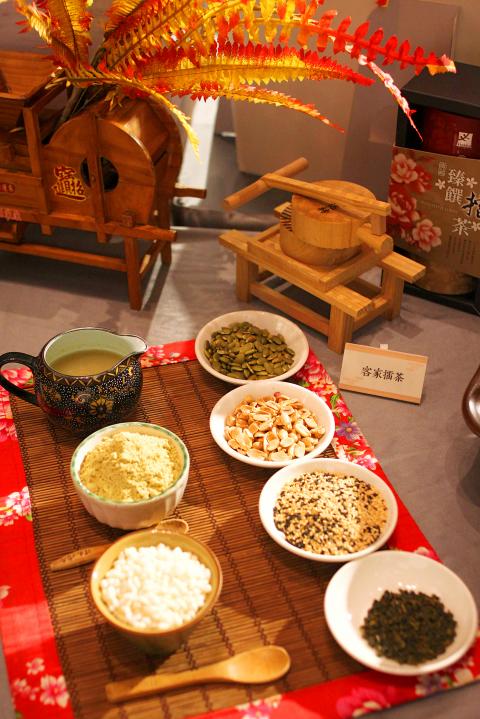
Photo: Davina Tham, Taipei Times
This weekend only, Taipei-dwellers seeking a taste of the famous fish head stew can head to its pop-up booth at the Taipei World Trade Center, where Smart Fish is among more than a hundred food and beverage vendors showing at the Taiwan Culinary Exhibition. The exhibition opened yesterday and runs until Monday, with admission priced at NT$200.
This year’s exhibition explores Taiwanese culinary heritage from five different angles: local delicacies; old-school eateries; food styling; masterclasses and rare skills; and international cuisines from Japan, Vietnam and the Muslim world.
If there’s one criticism of this exhibition organized by the Taiwan Visitors Association, it’s that despite the growth potential from overseas customers seen by the likes of Lin, this massive business-to-consumer platform continues to reflect a preoccupation with domestic tourism rather than an outward-looking approach.
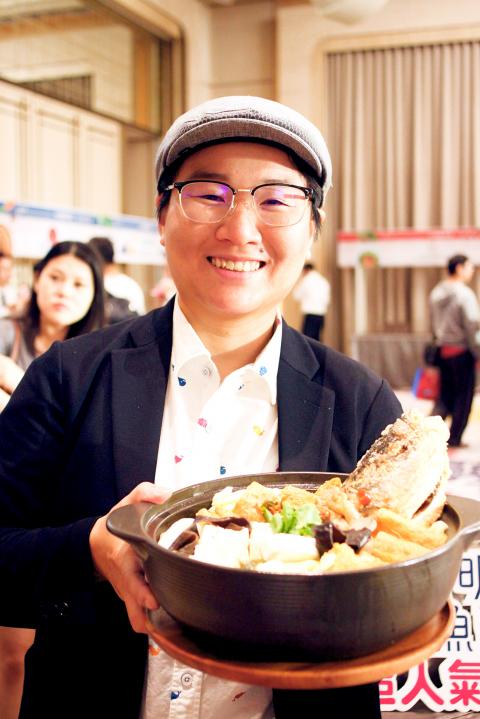
Photo: Davina Tham, Taipei Times
“Taiwan’s cuisine is a key tourism resource for us to promote our international tourism,” said Chang Hsi-tsung (張錫聰), deputy director-general of the Tourism Bureau, at a pre-event press conference on Thursday. That might explain why Japanese actor, TV chef and heartthrob Mokomichi Hayami was appointed as the face of the trade show.
Yet visitors will be hard-pressed to find any English-language materials about or at the exhibition, and no international media was spotted at the press conference. Given the comprehensive themes and impressive array of vendors gathered from across Taiwan, this is a missed opportunity.
But for gourmands led by their tastebuds and noses, the Taiwan Culinary Exhibition will still be an entertaining and flavorful display of the best of local cuisine.
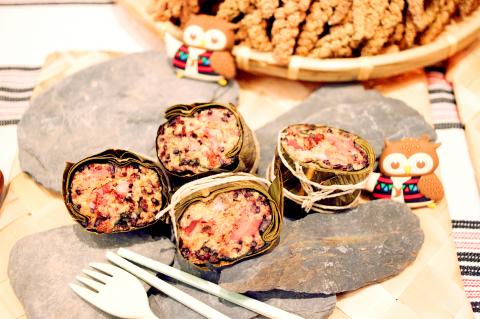
Photo: Davina Tham, Taipei Times
Thirty-one old-school eateries will serve up foods from longstanding family businesses, including Lim’s fish head stew, rice noodles, lamb hotpot and shaved ice, at a pavilion organized by the Department of Commerce, while a fine wines pavilion by the Ministry of Finance sheds light on local varieties.
Visitors interested in minority cuisines can visit the pavilion of the Hakka Affairs Council introducing different foods eaten during the four seasons of the year, including thunder tea rice (擂茶飯) and an array of sweet or savory glutinous rice cakes. The Council of Indigenous Peoples meanwhile seeks to raise awareness of Aboriginal culture through an introduction to staple ingredients like foxtail millet.
Such ingredients may seem common, said council deputy director Tsai Miao-ling (蔡妙凌), “but these things actually contain our culture and our stories.”
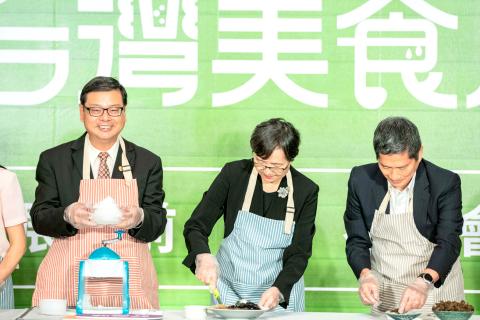
Photo courtesy of Taiwan Visitors Association
Seasonality is a common thread running through many pavilions, with the Tourism Bureau focusing on summertime small-town specialties, including several icy desserts, while the Council of Agriculture showcases fruits and vegetables that reach their peak in these sweltering months.
Even trainspotters have not been left out, with Taiwan High Speed Rail pushing out a limited series of train lunchboxes, or biandang (便當), exclusively for the event.
Food styling forms another arm of the exhibition, as the Ministry of Culture draws on the collections of national museums and heritage institutions to spark a dialogue about traditional craftsmanship and how locally-crafted eating utensils and foods have shaped each other.
The exhibition will also feature masterclass lectures by Le Ruban Patisserie’s head chef Li I-hsi (李依錫), award-winning jam and preserves-maker Ke Ya (柯亞), Taichung cheesemaker Henry Gerard and founder of Taipei’s Mianto vegan restaurant Michel Cason.
Tastings and interactive activities are woven into the exhibition at almost every juncture, but these take fullest expression in a series of demonstrations of sugar art and creative bread-making, as well as hands-on lessons for homemade dishes like dumplings, knife-shaved noodles and stir-fries.

Cheng Ching-hsiang (鄭青祥) turned a small triangle of concrete jammed between two old shops into a cool little bar called 9dimension. In front of the shop, a steampunk-like structure was welded by himself to serve as a booth where he prepares cocktails. “Yancheng used to be just old people,” he says, “but now young people are coming and creating the New Yancheng.” Around the corner, Yu Hsiu-jao (饒毓琇), opened Tiny Cafe. True to its name, it is the size of a cupboard and serves cold-brewed coffee. “Small shops are so special and have personality,” she says, “people come to Yancheng to find such treasures.” She
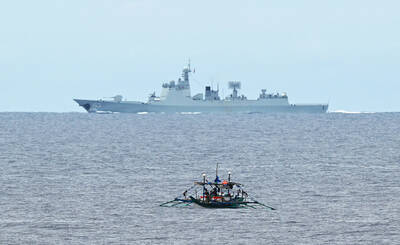
Late last month Philippines Foreign Affairs Secretary Theresa Lazaro told the Philippine Senate that the nation has sufficient funds to evacuate the nearly 170,000 Filipino residents in Taiwan, 84 percent of whom are migrant workers, in the event of war. Agencies have been exploring evacuation scenarios since early this year, she said. She also observed that since the Philippines has only limited ships, the government is consulting security agencies for alternatives. Filipinos are a distant third in overall migrant worker population. Indonesia has over 248,000 workers, followed by roughly 240,000 Vietnamese. It should be noted that there are another 170,000

Hannah Liao (廖宸萱) recalls the harassment she experienced on dating apps, an experience that left her frightened and disgusted. “I’ve tried some voice-based dating apps,” the 30-year-old says. “Right away, some guys would say things like, ‘Wanna talk dirty?’ or ‘Wanna suck my d**k?’” she says. Liao’s story is not unique. Ministry of Health and Welfare statistics show a more than 50 percent rise in sexual assault cases related to online encounters over the past five years. In 2023 alone, women comprised 7,698 of the 9,413 reported victims. Faced with a dating landscape that can feel more predatory than promising, many in

“This is one of those rare bits of TikTok fitness advice with a lot of truth behind it,” says Bethan Crouse, performance nutritionist at Loughborough University. “Sometimes it’s taken a bit too literally, though! You see people chugging protein drinks as they’re scanning out of their gym.” Crouse recommends the athletes she works with consume 20-30g of protein within 30-60 minutes of finishing a resistance training session. “The act of exercising our muscles increases the breakdown of muscle proteins,” she says. “In order to restore, or hopefully improve them — and get gains such as increased muscle mass or strength —